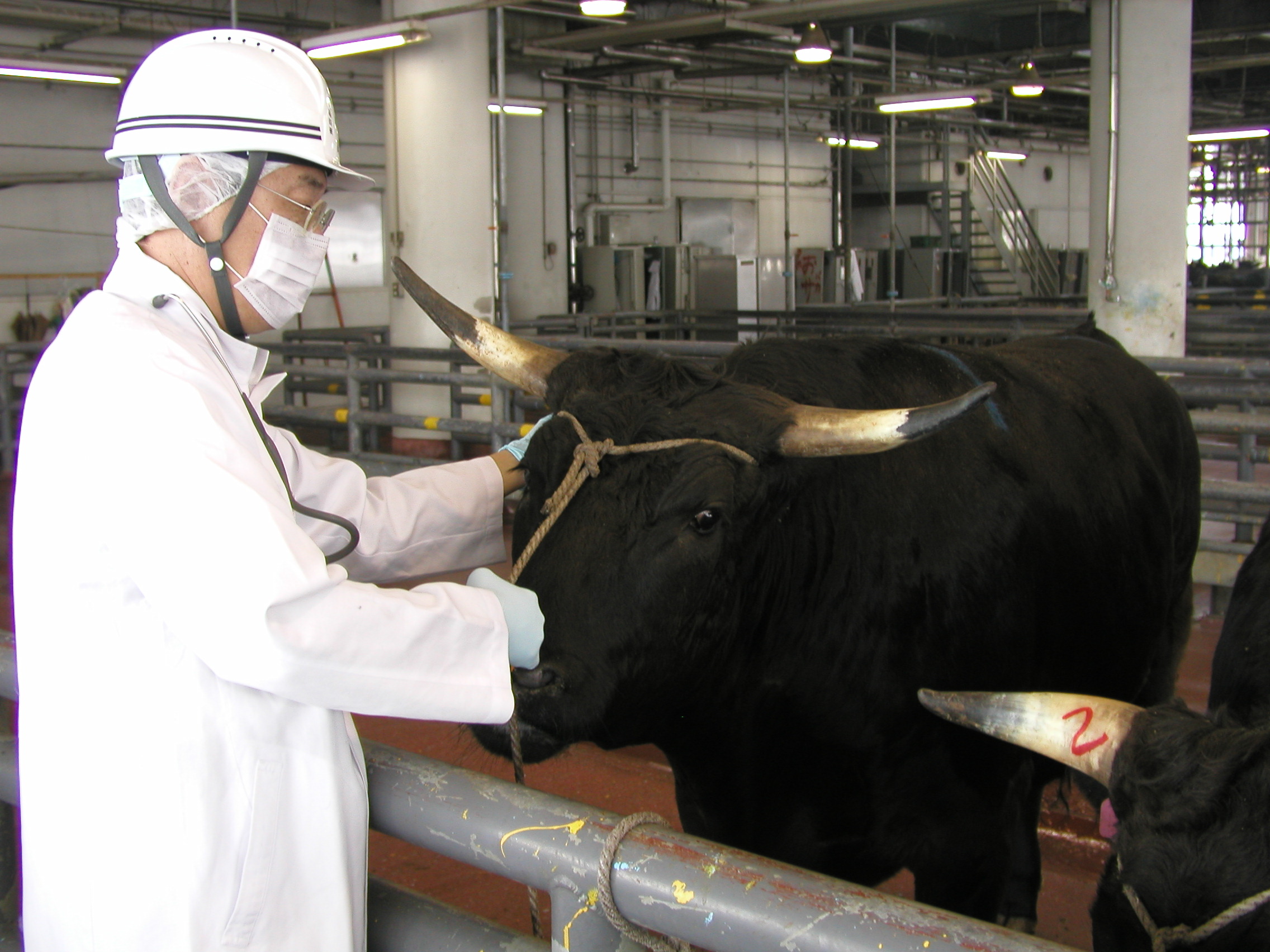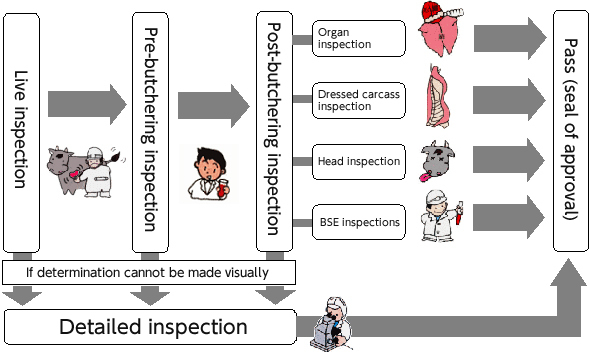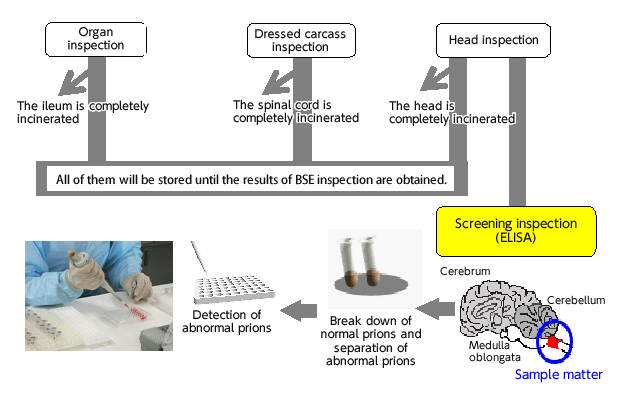Home » Tokyo Food Safety Information Center » Good things to know » Bovine spongiform encephalopathy (BSE) » BSE inspections
BSE inspections
In Japan, it is required that each cow and pig to be used for food be given a slaughter inspection. Slaughter Inspections employed by the prefectures (which contain cities establishing health center) and who are licensed veterinarians inspect the animals both while alive and as they are processed, removing any inappropriate for eating such as due to disease.
Slaughter inspections
Live inspection

The slaughter inspection first checks whether there are any abnormalities with the live animal. The slaughter of animals infected with a disease which can be transmitted to other livestock is prohibited.
Cattle infected with BSE exhibit nervous disorders such as abnormal behavior and loss of muscle coordination.
Pre-butchering inspection
After the animal is killed, the condition of its blood and other points are checked prior to butchering. Butchering is prohibited if any abnormalities are detected.
Post-butchering inspection
Next, the animal is inspected after butchering. Animals are butchered into several parts, including the organs, dressed carcass, head, and skin. The Slaughter Inspector visually checks for any abnormalities in the animal’s organs and meat. Any animals not deemed suitable for food are removed and disposed of. If a determination cannot be made visually, the inspector makes a more detailed inspection prior making their judgement.

Thus, only meat which has passed several stages of inspection receives Meat Sanitary Inspection Station’s seal of approval to be distributed to the public as meat.
BSE screening inspections
There are two types of BSE inspections – screening inspections and confirmation inspections. In Tokyo, screening inspections are conducted.
Screening inspections involve collecting a portion of the medulla oblongata as a test sample and conducting an ELISA (enzyme-linked immune-sorbent assay). A proteolytic enzyme is used to separate any abnormal prions, after which the sample is placed on a plate with a reagent of antibodies. The results are then measured using an inspection device to determine the presence of BSE infection.

If an animal tests positive in the screening inspection, the sample is sent to a national testing organization for confirmation inspection. The national testing organization uses Western blotting, immunohistochemistry inspection, and histopathologic inspection. If the sample again tests positive, the results are scrutinized by a council of Ministry of Health, Labour and Welfare experts, who then come to a final decision.
→ Click here to view BSE screening inspection in pictures
The Ordinance for Enforcement of the BSE Act was revised by the Ministry of Health, Labour and Welfare on June 3, 2013, and starting on July 1 of that same year, cattle aged 48 months and older also became subject to BSE inspection. In accordance with these revisions, since July 1, 2013, cattle aged 48 months and older as well as those animals deemed necessary by a Slaughter Inspector during live inspection are given screening inspection in Tokyo.
Disposal of BSE infected cattle and designated materials
Until the results of BSE inspection are obtained, the edible portions of the animal undergoing testing such as the organs and dressed carcass are all stored and, if the result comes back positive, all materials derived from the cow are completely incinerated.
In addition, specified materials (the tonsils and ileum of cows of any age and the heads [excluding the tongue, cheeks, and tonsils] of all cows 30 months or older) are also incinerated. Currently the heads and spinal cords of cows under 20 months of age are also incinerated at the Tokyo Central Wholesale Market Meat Market.